In its early years Modern Conscience quickly became recognized as perhaps the most sought after restoration and preservation house for Eames pieces in the world. It rapidly became apparent that we were staking our reputations on our work, including the replacement parts we were sourcing. To keep the respect we had earned we would have to manufacture our own replacement parts. The parts that were available at the time were inadequate substitutes for the originals. We were slaving over impeccable restorations and the shock mounts and glides we could source were terrible; they were devaluing our hard work and making our clients question our expertise. If we wanted to sustain our reputation for the best restorations in the world we would need to step up to the task and produce shock mounts, glides, and other parts that would match the attention to detail and craftmanship we were putting into our work. Fast forward to today and our restorations and our parts are recognized as the best in the world. Our work is featured in the homes of the most discerning collectors, and in the galleries of some of the most respected institutions in the world.
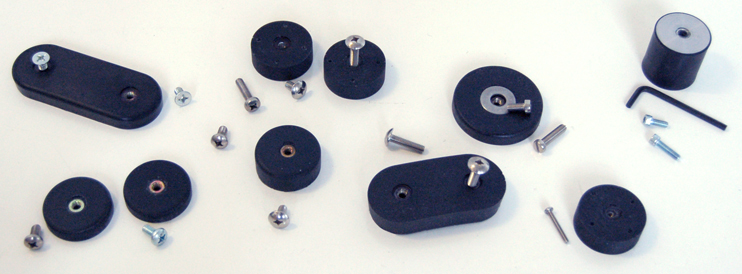
The process.
 Step One: Research. We embarked on this task by first compiling every bit of Eames research we could find. Ray Eames generously cataloged and donated a massive amount of information to the Library of Congress. This cache includes thousands upon thousands of photos, journals, and notes, along with everything from Christmas cards from friends to textile samples. There is also a wealth of knowledge in print form; try collecting all of the Eames literature you can get your hands on, it's a whole new rabbit hole. And your Eames research is not complete until you've taken advantage of the information compiled and curated by the Eames Office.
Step One: Research. We embarked on this task by first compiling every bit of Eames research we could find. Ray Eames generously cataloged and donated a massive amount of information to the Library of Congress. This cache includes thousands upon thousands of photos, journals, and notes, along with everything from Christmas cards from friends to textile samples. There is also a wealth of knowledge in print form; try collecting all of the Eames literature you can get your hands on, it's a whole new rabbit hole. And your Eames research is not complete until you've taken advantage of the information compiled and curated by the Eames Office.

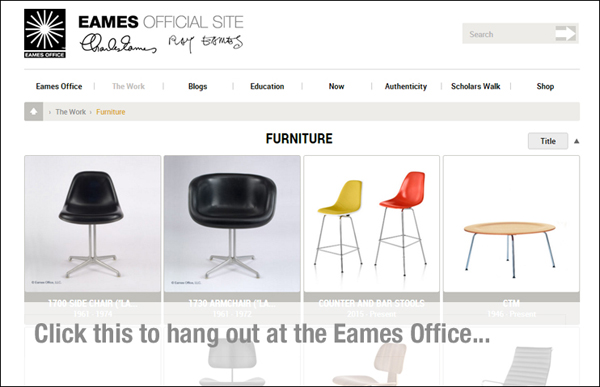
Step Two: Investigate Other Manufacturers Claims. Modern Conscience began manufacturing their own Eames parts in 2009. Prior to that Modern Conscience utilized the handful of other manufacturer's parts available. It quickly became clear that this was not an option; these parts failed after a short period of time and did not allow Modern Conscience to guarantee a respectable and quality restoration.
Made in the USA? Modern Conscience discovered that a manufacturer of neoprene Eames Lounge shockmounts was (and potentially still is) selling Chinese made shockmounts as 'Made in the USA.' Modern Conscience ordered these shockmounts for a repair, only to discover a partially sanded off 'Made in China' mark on the bottom of one of the mounts. This brazen false advertising experience was the catalyst for Modern Conscience to make their own parts in the United States with US made components and rubber.
Neoprene is the Best? One of the most ubiquitous, and arguably false, advertising claims about Eames Shockmounts is that they were all originally made from neoprene and that neoprene is the strongest and best synthetic rubber. This is provably false with a small amount of research. None of the shockmount patents dictate that neoprene was exclusively used, rather, a list of possible rubber options is described.
Like all materials used in manufacturing and construction, synthetic rubbers are required to comply with ASTM International Standards. ASTM International is an international standards organization that develops and publishes voluntary consensus technical standards for a wide range of materials, products, systems, and services, including synthetic rubber. These standards are used by rubber manufacturers to create rubbers and define their various properties.
For synthetic rubber selection we're most interested in good aging, as well as excellent abrasion, tear, and solvent resistance. Abrasion and tear resistance is crucial in a shockmount because there is a captured metal insert that is trying to tear the mount apart. Additionally, the frame or base presses into and abrades the shockmount with every use of the chair. We also want good solvent resistance so that we can clean and oil our furniture without fear that these products will damage the shockmounts.
When we review synthetic rubber properties we find that neoprene has poor aging, poor abrasion resistance, poor tear resistance, and poor resistance to solvents. Especially in contrast to urethane (and polyurethane), which was invented in the 1930's around the same time as neoprene. The main reason to choose neoprene would be because it is cheaper as a raw material, it requires less manufacturing equipment, and it looks and behaves similarly to higher quality rubbers over the short term span of about a year.
Many rubber manufacturers supply comparison charts, to convey ASTM standards and properties, to quickly choose the rubber that would be suitable for a specific application. Here are a few that clearly show that urethanes consistently outperform neoprene in all of the properties that matter for shockmount manufacturing.
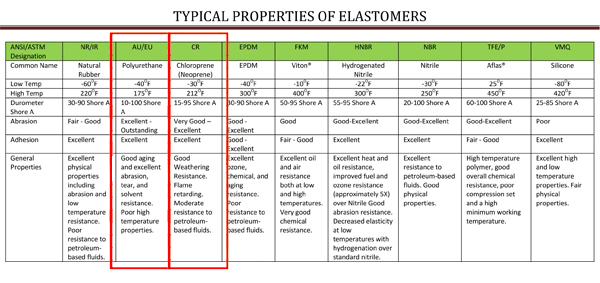

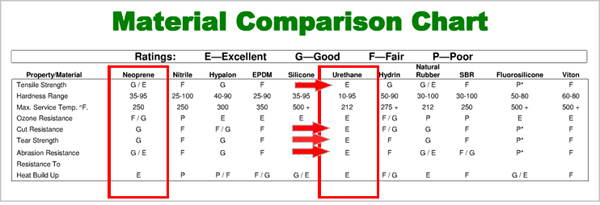

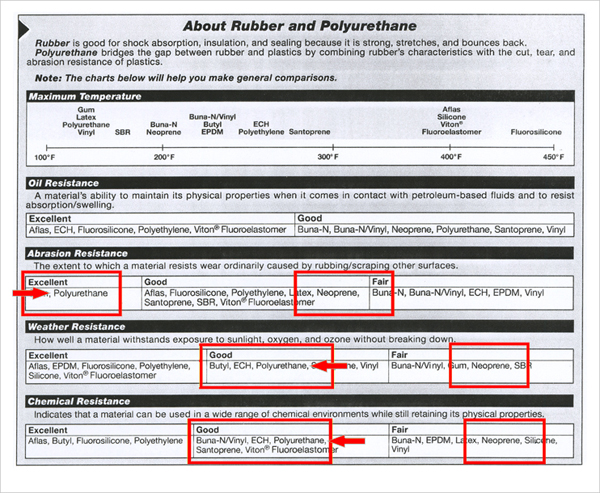
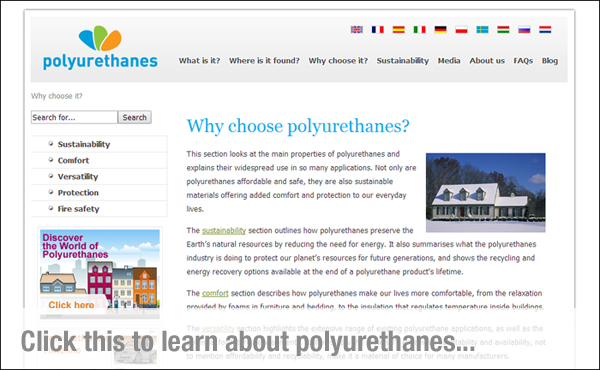
Step Three: Investigate Patents. The next step was to scrutinize the original shock mount patents. The graphics that go along with these are of course beautiful, but the text is wonderful as well. It is written in first person by Charles Eames himself:
"There have heretofore been various attempts made to utilize plywood, thin metal and other decorative panel materials in quality furniture. In general, these efforts have resulted in failures for the reason, among others, that no satisfactory construction was known whereby an artistically molded plywood seat, for example, could be supported to withstand normal use without disfiguring the decorative surface of the plywood... It is an object of my invention to provide a resilient furniture mount construction which can be secured to the rear or bottom face of a slightly flexible decorative seat or back panel without in any way changing or impairing the appearance of the front or exposed surface of the panel. Another object is the provision of a practicable resilient shock mount assembly which overcomes disadvantages inherent in mount assemblies heretofore known to the art."
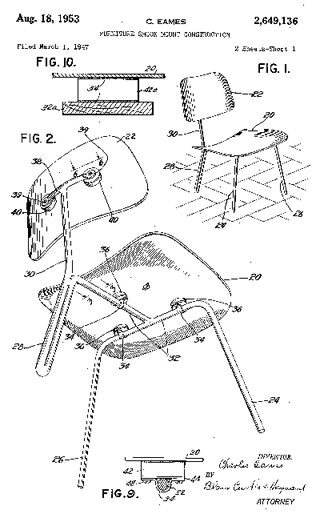
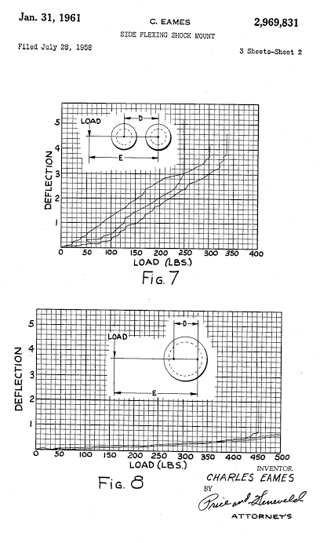
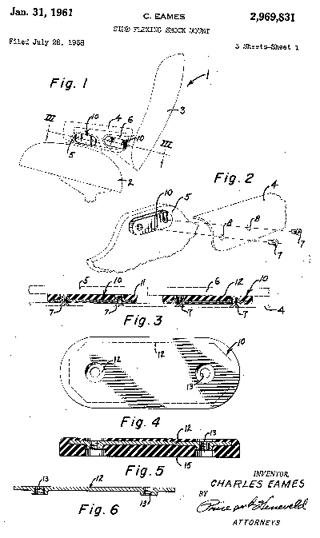
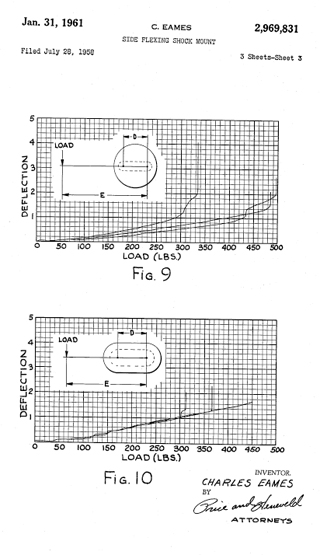
Step Four: Collect and Catalog.While a patent will give you a lot of information on the inventor's original intent, it's not a cookbook or a step by step how-to-make something. The next step would be to identify how the parts had actually been made. So we relentlessly cataloged many thousands upon thousands of Eames lounge and ottomans, fiberglass chairs, molded plywood chairs, and other Eames pieces. Our research catalog is comprised of chairs we have documented and handled in person; many of which we have also repaired. Charles and Ray Eames were constantly perfecting their designs and inventions; as a result there is an evolution of shock mount types, screws, and glides. From a preservation perspective it is important to honor each of these iterations. These iterations are referred to as 'generations' in the world of collecting Eames furniture. We have done the painstakingly long work of documenting each of these generations through a careful examination of vintage Eames pieces and their components. We have cabinets full of vintage parts; it's probably silly to keep all of this crusty old stuff around, but making perfect parts became a strange obsession a long time ago.
Step Five: Manufacture. Having spent over three years researching and planning we were ready to begin prototype production. Small batch manufacturing is of course an art in and of itself. Sourcing the correct equipment and raw materials was a critical step. We spent another year testing materials and methods. We make the molds in-house in our metal shop. We form the metal plates in-house in our metal shop. And we cast the parts in-house with our injection molder. We use the same methods as the originals.
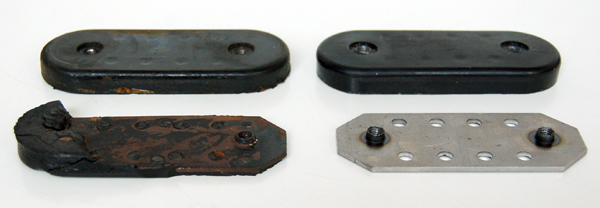
Step Six: Test.The patents vaguely describe 'rubber' as the material, but did you know that there are countless (possibly hundreds of thousands) of rubber formulations? Armed with the correct molds and steel inserts we began the long (and costly) process of testing rubber compounds for durability and longevity. We have the benefit of living in an aerospace town, so we've had the help of various aerospace contractors along the way. We've arrived at a shockmount and adhesive combination that's true to the originals and allows us to have integrity in our restoration and preservation work.
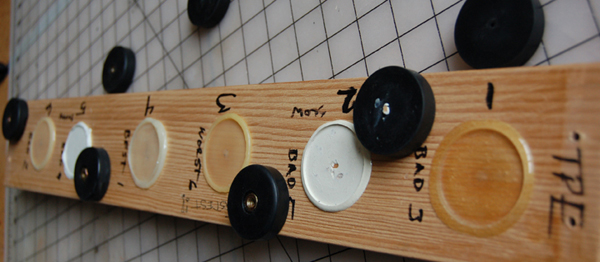
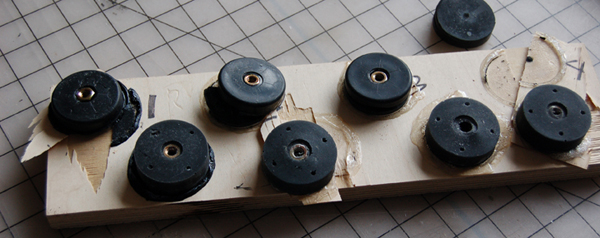
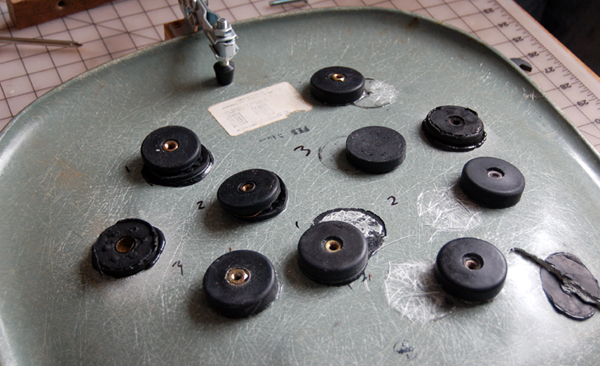
Step Seven: Refine and Execute. To this day Modern Conscience is unrivalled in our pursuit of perfect parts. And if we're being completely honest, a fair amount of our restoration and preservation work is remedying the work of other well meaning shops or collectors that used substitute parts instead of Modern Conscience parts. Our goal is to treat every piece as if it were our own. We work towards solutions that honor the original work, preserve the legacy, and preserve the value.
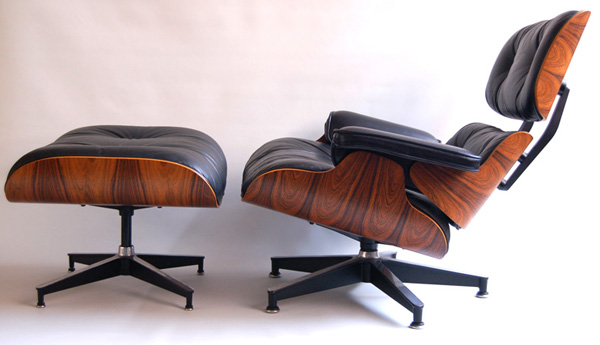
Perfect restorations. Beautifully engineered parts. State of the art US manufacturing. No compromises.
We are collectors of Modern furniture and our restoration parts are the best in the world.